Les Ateliers de la Terre - Planet Workshops
Les Ateliers de la Terre - Planet Workshops
The Ramsar Convention on Wetlands: 40 Years of Action
Four decades after it was signed, the Ramsar Convention on Wetlands is pleased with progress to date in its activities and reaffirms the crucial importance of wetland ecosystems for sustainable development.
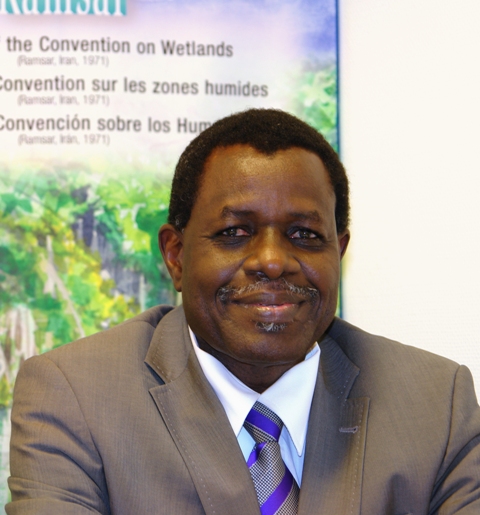 |
| Anada Tiéga Secretary General of the Ramsar Convention |
Wetlands
Wetlands are natural landscapes found from the mountains to the seas. They include rivers and their tributaries, floodplains, lakes, estuaries, deltas, peatlands, oases, coastal zones, including mangroves and coral reefs, among others.
Taking stock of 40 years of implementation
At lot has been achieved over the last 40 years. The signature of the Convention on Wetlands in Ramsar, Iran, in 1971 by the representatives of 18 nations was the culmination of 9 years of hard work and careful diplomacy on the part of many people devoted to the cause. Forty years have now passed and today the Convention numbers 160 signatory countries – practically nine times the original number – and it is possible to observe the remarkable progress that has been achieved in that time. The Convention has become the spearhead of global efforts for the conservation and sustainable use of wetlands and their water resources, as well as for the conservation of the diversity of life that they support.
Crucial value of wetlands
Today, many economists estimate that the services provided by wetlands are worth more than US$ 14 billion per year. Some services are difficult to estimate in economic terms despite being vital. For example, it is difficult to value protection of human lives against the negative impacts of floods in economic terms. Yet wetlands, like mangroves, are crucial for saving human lives in the event of tropical storms such as cyclones, typhoons and hurricanes.
Some wetland assets do not touch individuals directly, yet remain crucial for society in general. This is the case, for example, of flood plains which temper the negative impacts of torrential rains. The same is also true of peatlands, whose capacity to capture and store carbon over several millennia far outweighs that of tropical forests. It is only now, forty years after the signature of the Ramsar Convention that the world is beginning to appreciate the role of wetlands in mitigation and adaptation to the impacts of climate change.
Raising awareness of the value of wetlands is a prerequisite to assist local, national and international decision-makers to make good decisions on the sustainable management and use of this heritage so indispensible to life on earth. Efforts to restore and value wetlands not only yield precious economic incentives and means of subsistence, but can also yield additional resources and offer opportunities to engage wider sectors of society in biodiversity conservation and adaptation to climate change.
Wetlands and climate change
The Millennium Ecosystem Assessment (MA) provided a clear assessment of the current status of the planet’s wetlands and of the necessity of restoring them as part of efforts to mitigate and adapt to climate change.
Efforts to mitigate climate change impacts: wetlands include peatlands, which store carbon, mudflats, mangroves and forest wetlands.
It may appear surprising that peatlands can absorb greater volumes of carbon per hectare per annum than existing forests. Yet, this is the finding of a scientific study carried out as part of a joint programme between the Global Environment Facility, the United Nations Environment Programme, Wetlands International and several NGOs in Asia.
This study highlights at the international level, the close links between degradation of peatlands and climate change and reveals that the destruction and drainage of peatlands along with peatland fires result in emissions of more than 3 billion tonnes of carbon dioxide each year – equivalent to 10% of total global emissions from fossil fuels. Protection and restoration of peatlands are among some of the most effective and least costly options to mitigate the impacts of climate change.
Another study estimates that peatlands contain an average of 5,000 tonnes of carbon per hectare and absorb some 0.7 tonnes of atmospheric carbon per hectare per annum. Globally, peatlands contain more 3 carbon than all the tropical forests in the world including those found in the Amazon, the Congo Basin and Indonesia.
On this note, it should be remembered that the most important forests in the world only exist because they are supported and maintained by the networks of wetlands that make up the Amazon, Congo and Indonesian river basins. None of these majestic forests would be able to exist or contain the tremendous biodiversity richness which defines them without the dense network of wetlands that support and give them life. For instance, the Amazon River alone is made up of more than 1,100 tributaries of which 17 are more than 1,500 km long. The droughts of 1997-98 and especially that of 2005 revealed the fragility of the system and we now know that the Amazon Forest will not be able to survive 5 years of uninterrupted drought. Almost one-fifth of the world’s total river water flows through the Amazon, which with an area of some 7,050,000km2, spans the world’s largest river basin and is home to the world’s richest and most diverse forest.
Efforts to adapt to climate change impacts: these require making the link between ecosystem services, in particular the value of food products from wetlands, and fresh water supply.
[Ed. Note: More in the Key Message for August: Wetlands are part of the carbon cycle, don't destroy them]
The challenge of sustainable water and agriculture in wetlands
The Ramsar Convention, its Contracting Parties, Organs and Partners are working to raise awareness of the special challenge presented by water insofar as climate change will render precipitation less and less reliable. Investment in rational use of water should be a priority to respond to this challenge. Agricultural policies can be a source of effective and sustainable management systems for natural resources. Similarly, putting in place legislative and financial incentives to support farmers can also encourage them to make sustainable, environmentally sound investments. Land use and water management policies can guarantee access and rights to resources, and promote sustainable management practices.
Interdependence of wetlands, water, other natural resources and agriculture
The text of the Ramsar Convention emphasizes “the interdependence of man and his environment… and the fundamental ecological functions of wetlands as regulators of water regimes”. Thus, wetlands constitute a set of resources of high economic, cultural, scientific and recreational value. Wetland ecosystems in all their various forms, sizes and characteristics, are an integral part of the water cycle and play a crucial role in optimizing the quantity, quality and reliability of water resources in all their various states (liquid, ice or snow, gas) and at every stage of the cycle.
As a consequence, therefore, strategies for the protection and use of water resources (including in agriculture) must be considered from an interdependent perspective, and need to be effective and efficient in order to optimize and maintain the services provided by the ecosystems as well as the agricultural, industrial and energy services upon which we depend.
Impacts of climate change on water and wetlands
It is an incontrovertible fact that easily accessible water and wetlands are dependent upon the place and time where water and snow fall. Despite the fact that scientists have recognized that they are not in a position to determine with certainty the extent of global warming, they have nonetheless recognized that this is not an excuse for delaying action. The conclusions of the Fourth Assessment Report of the Intergovernmental Panel of Experts on Climate Change (IPCC) (Pachauri, R.K. and Reisinger, A. (Eds.), 2007) highlight that:
- The surface area of the regions affected by drought is likely to increase. Heavy rainfall is likely to be more frequent and will increase the risk of flooding.
- As far as changes to snow, ice and permafrost are concerned, we now know for certain that natural systems are affected by an increase in the surface area and number of glacial lakes, growing instability of the ground in permafrost regions, rockfall avalanches in mountainous regions, and changes in some of the Arctic and Antarctic ecosystems.
- Effects on the water cycle are primarily the result of increased runoff and early spring water flow in rivers fed by snow and ice melt [and] the warming of lakes and rivers in several regions with all its repercussions on the thermal structure and quality of the water.
Impacts of climate change on flora and fauna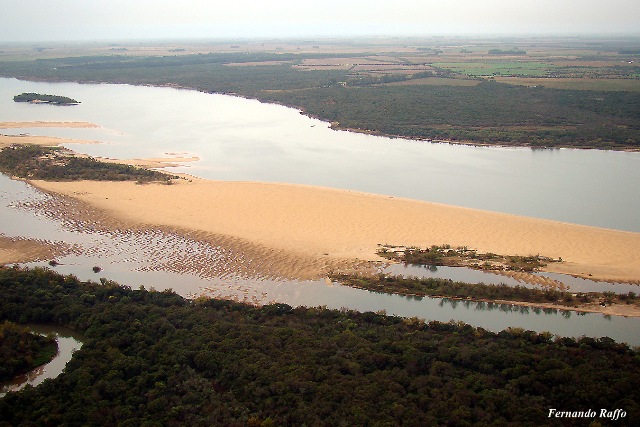 The Fourth Assessment Report of the IPCC (Pachauri, R.K. and Reisinger, A. (Eds.), 2007) (op.cit) states that on the basis of evidence gathered from a large variety of species, there is a high probability that recent warming has profoundly affected terrestrial biological systems, including resulting in early onset of the features associated with spring, such as early appearance of leaf buds, migration of birds, and early nesting and egg laying. In several areas there is a trend toward early “greening” of the vegetation in the spring, which is linked to longer and warmer growing seasons.
The Fourth Assessment Report of the IPCC (Pachauri, R.K. and Reisinger, A. (Eds.), 2007) (op.cit) states that on the basis of evidence gathered from a large variety of species, there is a high probability that recent warming has profoundly affected terrestrial biological systems, including resulting in early onset of the features associated with spring, such as early appearance of leaf buds, migration of birds, and early nesting and egg laying. In several areas there is a trend toward early “greening” of the vegetation in the spring, which is linked to longer and warmer growing seasons.
Conventional knowledge based on previous research, supported the notion that productivity of terrestrial plants was on the increase. A 2003 article in the journal Science by R. Nemani et al, showed that global production of terrestrial plants increased by more than 6% between 1982 and 1999; this was because for close to two decades, solar radiation and water availability, influenced by climate change, stimulated growth (R. Nemani et al, 2003).
However, in another study in Science, in 2010, Zhao and Running found that “the impact of regional drought overwhelmed the positive influence of a longer growing season, driving down global plant productivity between 2000 and 2009”. Their analysis showed that since 2000, high-latitude northern hemisphere ecosystems have continued to benefit from warmer temperatures and a longer growing season, but that effect was offset by warming-associated drought that limited growth in the southern hemisphere, resulting in a net global loss of land productivity.
Climate change, wetlands and human health
The impacts of climate change on wetland ecosystems could also have consequences for human health, both directly and indirectly. Previously, the greatest cause for concern centred on possible changes in the range and seasonality of infectious epidemics caused by mosquitoes which are likely to have a greater or lesser effect on a large number of regions of the world. Water regimes are also likely to alter in certain parts of the world: the Komadugu-Yobe River, for example, which separates part of Nigeria from Niger has, during the 20th century, seen its course change. As a result, one of these countries could see its land area increase upstream, while the second country could lose land to the river. The quantity of water in the river has also changed with the watercourse becoming shallower because of the volume of sand deposited on the river bed.
Even on a small scale, such changes have repercussions on the inhabitants of the region. One of the biggest challenges is erosion of the river banks. Habitats and arable lands have been destroyed or are threatened by the river (Martinsson, 2010); rainfall could diminish; there are likely to be shortages of clean water in some communities with related impacts on hygiene and sanitation. It is likely that there will be an increase in the number of accidents, displacements and even deaths among populations living close to wetlands that are vulnerable to violent floods, storms, cyclones and bushfires. There is also a heightened risk of food poisoning, salmonella and Campylobacter infections, and of intoxication by other temperature-sensitive bacteria (Confalonieri et al, 2007). All these risks to human health could appear together at specific times and places, making management of the consequences on human health very challenging.
Wetlands are a catalyst for cooperation
The global network of wetlands stretches from the mountains to the seas and from the tropical rainforests to the deserts. All landscapes have their own wetlands, even the Sahara Desert. Wetlands and forests are interdependent and should be managed in an integrated manner. We live in an interdependent world and wetlands are what links us all to one another. The Nile, for example, provides water and food to more than 200 million people spread over 10 countries in a basin which covers 10.3% of the African continent. The Nile Basin includes a network of lakes stretching over 81,500 km2 and is home to 70,000 km2 of marshlands. The countries in the Nile Basin are particularly dependent on the availability of water from the Nile, its lakes, tributaries and marshlands. It is one region of the world where political stability among neighbouring countries is directly linked to water availability.
Fresh water provided by wetlands was shared by 300 million people 2000 years ago. The same quantity of water is today shared by more than 5.7 billion people, a figure likely to rise to 9 billion people in 2050. In other words, the world needs to get a grip; with growing risks from pollution, droughts and flooding that seem to come around more frequently, and with greater intensity, the risk of compromising the safety of future generations is high.
Any country concerned about the future of current and future generations must take measures to manage its wetlands. All ancient civilizations that failed to manage their water and wetlands have disappeared. Yet, we continue to inflict damage on our rivers, lakes, peatlands, and coastal wetland ecosystems.
Links between climate change, wetlands and short- and medium-term consequences on agriculture
In the future, most of the effects of an increasingly extreme climate are likely to manifest themselves through water: in some instances, a too large a volume of water at the wrong time and in the wrong place, and in others, very little or none where the need is greatest. Flooding and drought are going to increasingly affect land-use systems, notably agriculture.
The clear messages from the Millennium Ecosystem Assessment (MA) on the impacts on water, agriculture and ecosystems (Robert T. Watson et al (2005) have been reinforced by the UNEP GEO-4 Report (UNEP, 2010). The GEO-4 Report notes that some 70% of available water from rivers and other wetlands is already used for irrigation, yet, to fully achieve the Millennium Development Goal (MDG) related to reducing hunger, it will be necessary to double food production between now and 2050; this in turn implies that demand for water for irrigation is likely to increase substantially. Just as availability of fresh water is on the decrease, an increase in water use is expected between now and 2025. This increase is expected to reach as much as 50% in developing countries and 18% in the developed world. So the gap between supply and demand seems to be forever growing, while at the same time, largely sectoral national and global governance measures seem to be insufficient to tackle this important challenge. 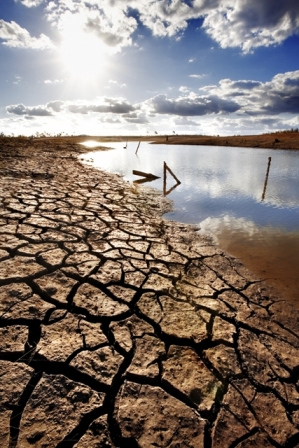
The consequences both of the variability of the current climate and long-term climate change are being increasingly felt in developing countries where they primarily affect the poorest sectors, especially poor farmers. The recent floods in Pakistan show the extent of unexpected flooding and the magnitude of the damage that such floods can inflict on agriculture. The immediate damage caused by the water was followed by a disaster in which rising water flooded cultivable land, destroying the agriculture-based economy and bringing with it the threat of food crises. The regional authorities estimated that some 50,000 hectares of land along the River Swat were carried away and that it will take up to 10 years to restore soil fertility in this critical region which currently feeds 50,000 people.
Droughts and their related impacts in the Sahel regions of Africa have been the subject of intense research since 1970, because climate variability in these regions has resulted in food insecurity in several countries of the Sahel. Agriculture in this region is almost entirely dependent on three months of rain in the summer; except along the banks of the main rivers, lakes and other seasonal water courses.
At this juncture, it is worth citing the example of the Chad River Basin, where I helped supervise the Transboundary Diagnostic Analysis (TDA) and prepare the Strategic Plan of Action (SPA) for 2003 – 2007. These activities were intended to identify and analyse the causes of soil and water degradation and propose a Strategic Plan of Action to reverse the trend towards degradation. A team of about 30 people cooperated closely with a wide range of stakeholders in efforts to prepare the TDA which yielded the following results (Lake Chad Basin GEF Project, 2007):
At full capacity, Lake Chad has a surface area of 25,000km2. It consists of a series of distinct morphological basins that become increasingly visible as the water level rises. Although it is an enclosed basin in an arid region, it has relatively low salinity. The biggest threat to the region’s water resources is from the shrinking surface area of the lake; at present, the lake has a surface area of less than 3,000 km2. The retreat of the lake has had negative impacts on large-scale irrigation in Nigeria, and on recession agriculture in Niger, Cameroon and Chad, among others. Another major challenge is the variability of the water regime and availability of clean water. These are a direct consequence of the dramatic reduction in available clean water in the Lake Chad Basin which in turn is a result of a 95% decrease in the volume of the lake between 1963 and 2007. They are also a consequence of the observed variability in the water regimes of the rivers which flow into the lake, as well as of the variability in the rainfall regime, which has been exacerbated by population pressure, a lack of awareness about environmental issues and the absence of sustainable development in the political programmes of the riparian countries.
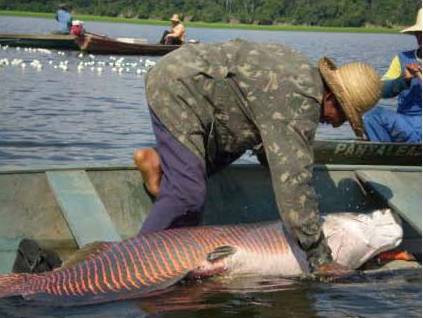 This situation has resulted in a steady decrease in access to the water, poor harvests, the loss of livestock, and collapse of fisheries and other services provided by the wetlands in the region. The socio-economic consequences of these impacts include food insecurity and a degeneration of the health of the population. Water shortages are considered to be the most pressing problem, not only because of the above-mentioned effects and consequences, but also because they lead to or contribute to other problems. The result is a vicious circle: such shortages lead to further unsustainable use of resources, and as a result, to greater levels of degradation. The net socio-economic consequence is an exacerbation of poverty caused by the lack of resources.
This situation has resulted in a steady decrease in access to the water, poor harvests, the loss of livestock, and collapse of fisheries and other services provided by the wetlands in the region. The socio-economic consequences of these impacts include food insecurity and a degeneration of the health of the population. Water shortages are considered to be the most pressing problem, not only because of the above-mentioned effects and consequences, but also because they lead to or contribute to other problems. The result is a vicious circle: such shortages lead to further unsustainable use of resources, and as a result, to greater levels of degradation. The net socio-economic consequence is an exacerbation of poverty caused by the lack of resources.
With some 120 species of fish, as well as 372 species of bird, the lake is a strategic repository of global biodiversity. However, water shortages are contributing to a loss of biodiversity and increased loss and transformation of the ecosystems: for example, the lake has been transformed from a body of free-flowing water to a marshy environment, and some 50% of the wetlands have been destroyed. The results of this are most keenly felt in the collapse of fisheries and recession rice cultivation, and the sedimentation of rivers and other bodies of water. This in turn has resulted in the colonization of silted sites by invasive species: Typha grass is a major problem in the Komadugu Yobe Basin, similarly, queleas, an invasive species of bird, are today prevalent throughout the basin. The presence of invasive plants and birds is to a large extent the result of poor management of water resources, poor implementation of environmental rules and regulations, and the absence of resource-use planning. The Typha grass blocks the river outlets and modifies their courses, while the queleas destroy crops, thereby contributing jointly to poverty and the loss of means of subsistence.
It is urgent to acknowledge the crucial role that wetlands play in the global water cycle, through water retention and treatment, and to appreciate the fact that almost all the water that we use comes directly or indirectly from wetlands.
The role of wetland management in responding to environmental and social imperatives.jpg)
Successful agriculture requires sustainable biological systems such as fertile lands and wetlands and healthy forests; that is to say, it requires biological systems that are both varied and healthy over the long term. Wetland management is one way to improve the resistance of water-based ecosystems to support and encourage the conservation of land and water, sustainable irrigation systems, agroforestry, aquaculture, and raw material and forage for cattle, etc. The implementation of innovative land and water conservation and agroforestry techniques is being undertaken in the Sahel region of Africa, including in the Lake Chad River Basin.
For example, several villages have developed their own erosion control systems as part of efforts to increase the capacity of wetlands to support agriculture. It is encouraging to know that farmers in the Sahel are conscious that the rains are unreliable and so are making efforts to make better use of available water resources. Furthermore, there are currently thousands of farmers’ organizations, small NGO projects, large international development projects, and programmes for the rehabilitation of the environment and water sources and other forms of support available to rural populations.
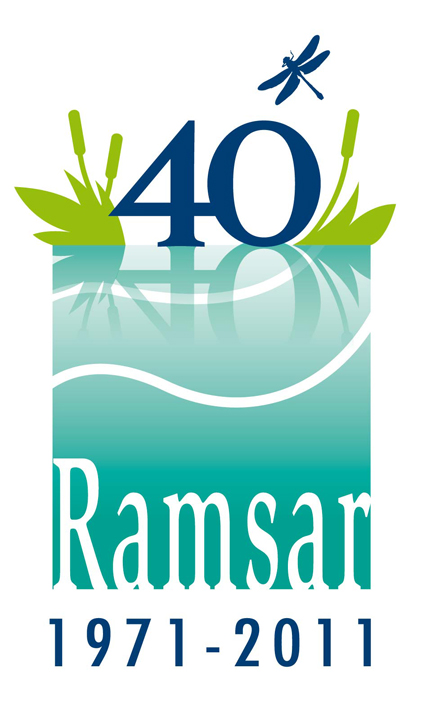
Development of partnerships
The Ramsar 40th anniversary is an ideal opportunity to strengthen partnerships among all users of lands and waters as part of efforts to make a joint contribution towards sustainable development through good management of wetlands. The following actors and sectors that use wetlands or influence their conservation are called upon to collaborate as partners in the Convention to ensure that wetlands become a real asset in the quest for economic, social and cultural development:
- Ministries responsible for the environment, water, fauna, fisheries, agriculture, livestock, health energy, tourism, mines and climate change
- Organizations responsible for water management
- Land and city collectives
- NGOs
- All user groups of services provided by wetlands.
Celebrations for the 40th anniversary of the Ramsar Convention on Wetlands are being organized in all countries that have adhered to the Convention as well as through activities organized by Convention partners. For further information, please look at the section of our website devoted to the 40th anniversary.

The Ramsar Convention and the private sector
Relationships between the Ramsar Convention and the private sector have been built up carefully and slowly. The first private sector partner of the Convention was the Danone Group that has been supporting efforts for the conservation and sustainable use wetlands.
Since 1998, the Danone Group has given considerable financial support to the Ramsar Convention. Indeed, the “Danone - Evian for Water” Fund supports the protection of wetlands throughout the world by contributing to efforts to raise awareness of the major challenges associated with water and wetlands. This pioneering partnership has led to synergies between the private sector, national and international decision makers and the public at large intended to raise awareness of the importance of preserving water resources and wetlands as well as of their sustainable use, through, among others, sharing of knowledge and expertise on the management of natural sites.
The strategic pillars and objectives of the partnership for the period 2011-2015 between the Danone Group – Evian and the Secretariat of the Ramsar Convention include:
- To increase visibility and communication with the public at large on the Ramsar Convention and its mission, and on activities undertaken in collaboration with Danone/Evian on behalf of wetlands and about the partnership itself;
- Promote the value, benefits and results of the partnership;
- Develop together projects and initiatives aimed at preserving, restoring and conserving wetlands throughout the world.
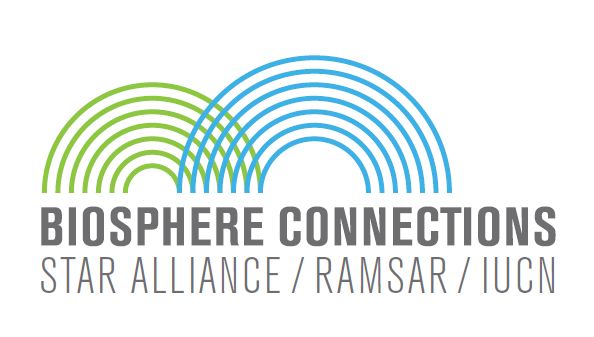
Although the Ramsar Convention is forty years old, the only private sector partners to date are the Danone Group through its Evian Water subsidiary, and the Biosphere Connections “Star Alliance” consortium of airline companies. The partnership with the Danone Group has yielded lessons that will enable the Convention to contemplate partnerships with a wider and well-targeted private sector.
Conclusions
Major challenges
Wetlands are natural infrastructure that receive water, purify it, stock it and transport and distribute it to multiple users including villages, towns, farmers, fishers, herders, national park and protected areas managers, industrialists, tourism operators, and all other living beings. It is easy to forget that water is indispensable for life and that without wetlands we would not have any fresh water. The world also often forgets that there is no substitute for water and that it is not easy to transport. We have no other choice than to manage it: manage wetlands, manage the water that they to provide us for free, manage the quality and quantity of water, manage water-related conflicts, manage natural disasters resulting from a lack of water or manage disasters that can result in an over-abundance of water. We cannot control nature. We must manage it. 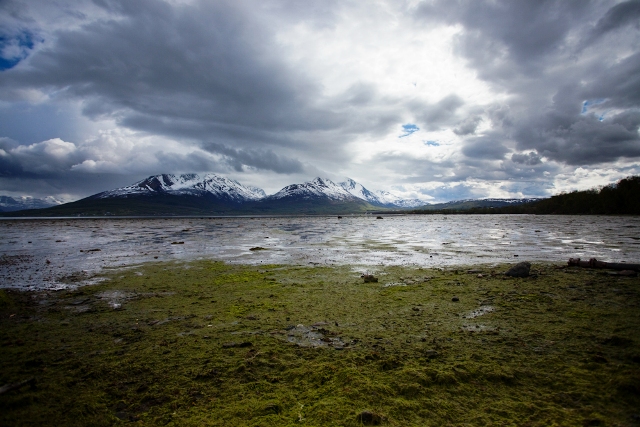
Wetlands, water and the diversity of life are inextricably linked. They are cross-cutting elements that require us to collaborate at local, national and international levels. A partnership for life is crucial if we are to rise to the challenges presented by climate change, water contamination by industry, intensive agriculture, urbanization and its by-products, and ever growing demand for water. The Ramsar Convention has a duty to contribute to this partnership and to expand it for current and future generations.
If we are to adapt to climate change, we will need to recognize and strengthen the links between wetlands and the services they offer to societies, in particular provision of fresh water and food. Effective management, including rehabilitation of wetlands must also satisfy fundamental human needs for food and water, while keeping in mind that the growing need for food and water could also jeopardize the management of wetlands.
To this end, a strong partnership is needed between the different actors. In response to this, the joint work currently being undertaken between the Ramsar Convention and various partners, including the United Nations system, NGOs and the private sector contributes towards:
- Better hydro meteorological monitoring giving rise to reliable data for the enlightened management of wetlands;
- Greater recognition of the role of wetlands as crucial natural infrastructure deserving of particular attention, given that efficient management of wetlands offers the most robust and resistant mechanisms for managing water under uncertain climate conditions;
- A better understanding of the role of wetlands in climate change adaptation and mitigation;
- Greater attention to the measures that could be implemented in the short term to increase resistance and robustness of wetland ecosystems;
- Increased collective action to resolve management and conservation problems in critical zones such as transboundary systems, including rivers and lakes, underground water systems, mangroves, coral reefs and peatlands;
- Better understanding, planning and management of integrated natural systems and systems of human origin (e.g. wetlands and irrigation) to raise awareness of their importance as a source of protection against the negative and uncertain impacts of climate.
The Ramsar Convention continues to pursue its mission for the conservation and rational use of all types of wetlands as important assets for different sectors including agriculture and food security, forestry, energy, water supply, health, urban and rural settlements, infrastructure, tourism, wild fauna, trade and transport all of which contribute to sustainable socio-economic development. The urgency of the situation demands nothing less.
For more information please visit the Planet Workshops - Les Ateliers de la Terre Webpage.
[Ed. Note: This paper appeared on the Les Ateliers de la Terre - Planet Workshops website originally and a link to the PDF full text including bibliography is available in English and in French.]